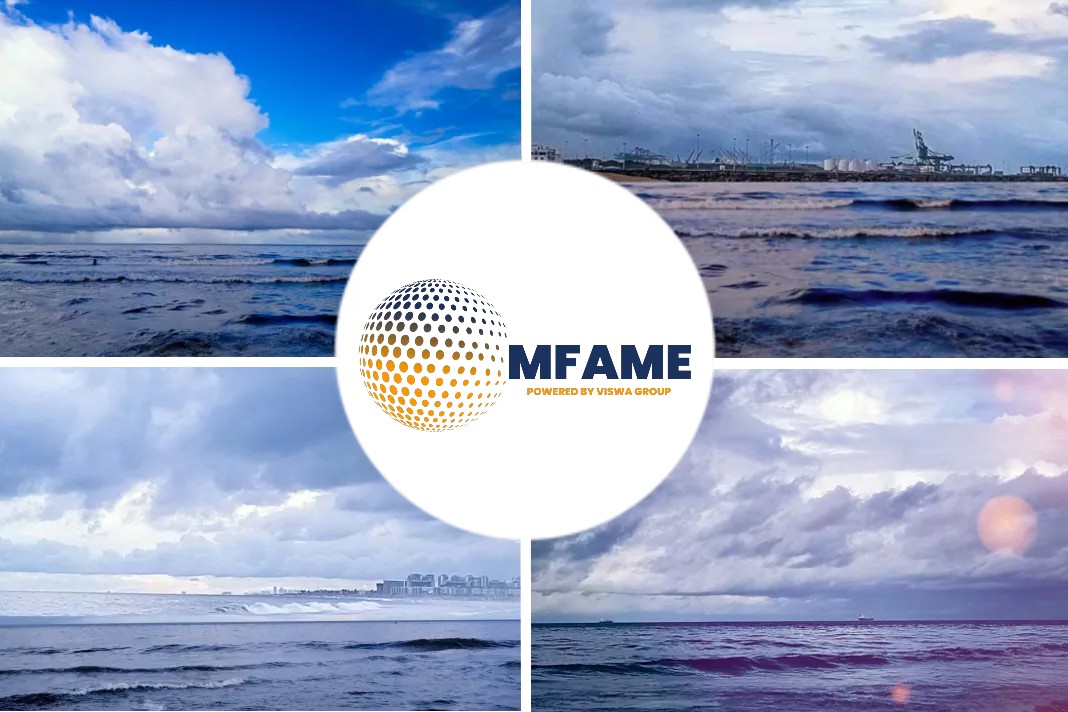An MOL news source speaks about contributing to Development of LNG Bunkering Ports and Wider Use of LNG Fuel.
LNG bunkering trial
TOKYO-Mitsui O.S.K. Lines, Ltd. (MOL; President & CEO: Takeshi Hashimoto) today announced that it cooperated an LNG bunkering trial in Tomakomai Port, jointly conducted by Tomakomai Port Authority (President, Mayor of Tomakomai City: Hirofumi Iwakura; Address: Tomakomai-City, Hokkaido) and Japan Petroleum Exploration Co., Ltd. (Representative Director and President: Masahiro Fujita; Headquarters: Chiyoda-ku, Tokyo).
The trial involved the LNG-fueled tugboat Ishin (Note 1), owned by MOL and operated by its Group company Nihon Tug-Boat Co., Ltd. (President: Tetsuro Nishio; Headquarters: Chuo-ku, Kobe), which was used for LNG bunkering.
In addition, MOL Group MOL Marine & Engineering Co., Ltd. (President: Takashi Nakashima; Headquarters: Minato-ku, Tokyo) cooperated on maritime consulting services for the trial.
Escorting large freighters
The Ishin is currently engaged in escorting large freighters and other vessels during port calling in/out operations, mainly in Port of Sakai-Semboku, Osaka. This is the third LNG bunkering trial for the tug, following earlier trials in Kobe and Nagoya. The LNG fuel was supplied by the truck-to-ship system (Note 2) using tanker trucks, which is also used to supply LNG at Sakai-Semboku.
The MOL Group has moved forward with the “adoption of clean alternative energy” strategy toward de-carbonization/low carbonization in line with “MOL Group Environmental Vision 2.1,” established in June 2021, with the aim of achieving net zero greenhouse gas (GHG) emissions by 2050.
Significant reduction in greenhouse gas (GHG) emissions
LNG fuel is expected to achieve a significant reduction in greenhouse gas (GHG) emissions, for example, about 25% less carbon dioxide (CO2) in comparison to conventional fuel oils. The MOL Group has promoted the introduction of LNG-fueled vessels as “a currently feasible initiative on reducing GHG emissions.” The group continually strives to achieve a low- and decarbonized society through its concerted efforts.
(Note 1) Please refer to the following past press releases for LNG-fueled tugboat “Ishin.”
February 28, 2019:
MOL Holds Delivery Ceremony for LNG-fueled Tugboat Ishin – Marking Solid Progress toward Start of New Business –
September 18, 2019:
LNG-fueled Tugboat Ishin Undergoes 1st LNG Bunkering Trial in Port of Kobe – Contributing to Development of LNG Bunkering Ports and Wider Use of LNG as Marine Fuel –
November 8, 2019:
1st LNG Bunkering in Nagoya Port – Developing an LNG Fuel Supply Terminal and Promoting the Use of Natural Gas –
September 2, 2021:
Japan’s First: LNG-fueled Tugboat Ishin Uses Carbon Neutral LNG
(Note 2) The truck-to-ship LNG bunkering procedure supplies LNG fuel from an LNG truck on shore.
[MOL Group 5 Sustainability Issues]
Realizing a sustainable society
MOL Group will contribute to realizing a sustainable society by promoting responses to sustainability issues, which are identified as social issues that must be addressed as priorities through its business.
We anticipate this initiative to contribute especially to the realization of “Environment -Conservation for Marine and global environment-” and “Innovation -Innovation for development in marine technology-“.
Did you subscribe for our newsletter?
It’s Free! Click here to subscribe!
Source: MOL






















